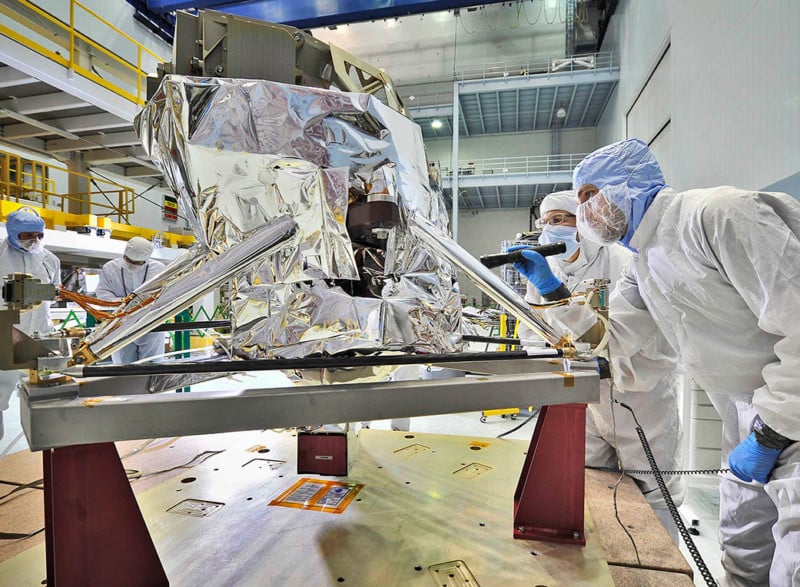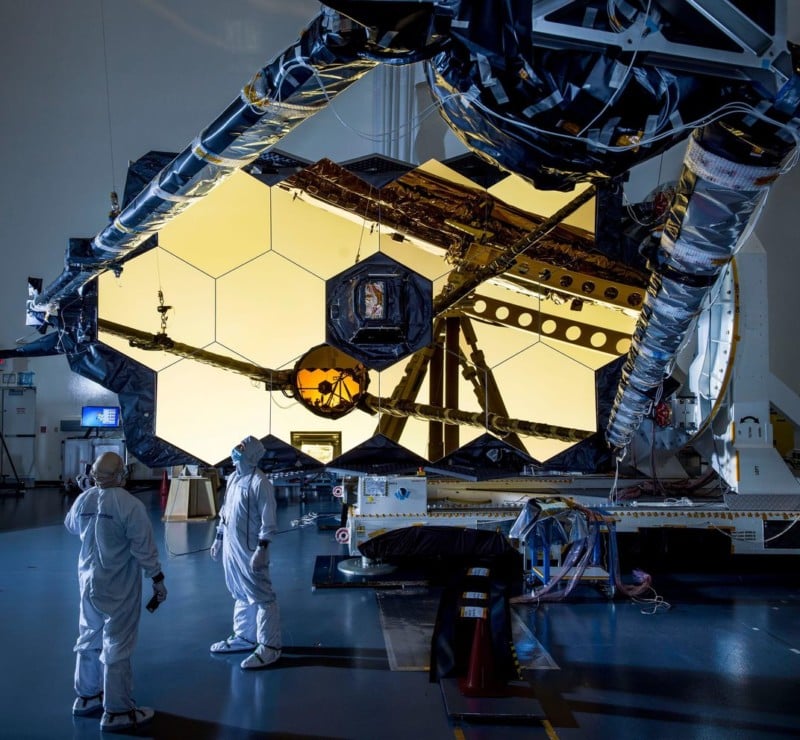This is the First Full-Color Photo from the James Webb Space Telescope
United States President Joe Biden has shared the first full-color photo taken by the James Webb Space Telescope as a preview of the full set of five images that will be shared publicly on July 12.
“Released one by one, these first images from the world’s largest and most powerful space telescope will demonstrate Webb at its full power, ready to begin its mission to unfold the infrared universe,” NASA says.
“This first image from NASA’s James Webb Space Telescope is the deepest and sharpest infrared image of the distant universe to date. Known as Webb’s First Deep Field, this image of galaxy cluster SMACS 0723 is overflowing with detail. Thousands of galaxies – including the faintest objects ever observed in the infrared – have appeared in Webb’s view for the first time.”
The photo above is the highest resolution photo of deep space that has ever been taken and the light captured by Webb in this photo has traveled for more than 13 billion years.
“If you held a grain of sand at the tip of your finger at arm’s length, that’s the part of the universe that you’re seeing. Just one speck of the Universe,” NASA explains.
“This deep field, taken by Webb’s Near-Infrared Camera (NIRCam), is a composite made from images at different wavelengths, totaling 12.5 hours — achieving depths at infrared wavelengths beyond the Hubble Space Telescope’s deepest fields, which took weeks.
“The image shows the galaxy cluster SMACS 0723 as it appeared 4.6 billion years ago. The combined mass of this galaxy cluster acts as a gravitational lens, magnifying much more distant galaxies behind it. Webb’s NIRCam has brought those distant galaxies into sharp focus — they have tiny, faint structures that have never been seen before, including star clusters and diffuse features. Researchers will soon begin to learn more about the galaxies’ masses, ages, histories, and compositions, as Webb seeks the earliest galaxies in the universe.”
A Monumental Achievement
NASA says that deciding what Webb should look at first has been a project that has taken more than five years. The above is just the first photo that will be released this week. Tomorrow, July 12, NASA, in partnership with ESA (European Space Agency) and CSA (Canadian Space Agency), will release the James Webb Space Telescope’s remaining four full-color photos and spectroscopic data during a live television broadcast from NASA’s Goddard Space Flight Center in Greenbelt, Maryland.

On July 8, NASA shared the five targets that would be shown in Webb’s first photos which include the Carina Nebula, WASP-96 b (a giant gas planet), the Southern Ring Nebula, and Stephan’s Quintet in addition to SMACS 0723.
One of the photos, very likely the one above, is the deepest view of the universe ever taken.
“Webb is nothing short of a real scientific feat. One of those images [to be released] on July 12 is the deepest image of our universe that has ever been taken,” NASA administrator Bill Nelson said last month.
A photo captured by Webb’s guidance sensor and shared on July 7 is one of the deepest photos of the universe ever captured. That photo was not designed to be used for observation but does provide an idea of just how powerful Webb’s cameras are if that quality was produced by a sensor made for navigational purposes.

While the photos are only this week being revealed to the public, some at NASA have already seen the photos and have described the results as incredible.
“What I have seen moved me, as a scientist, as an engineer, and as a human being,” NASA’s deputy administrator, Pam Melroy, said in late June.
“There is already some amazing science in the can, and some others are yet to be taken as we go forward. We are in the middle of getting the history-making data down,” Thomas Zurbuchen, who leads NASA’s scientific programs, added.
“It’s really hard to not look at the universe in a new light and not just have a moment that is deeply personal. It’s an emotional moment when you see nature suddenly releasing some of its secrets, and I would like you to imagine and look forward to that.”